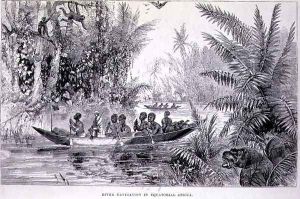P.B. du Chaillu Paintings
Paul Belloni du Chaillu was not a traditional artist in the sense of painting or sculpture, but rather an explorer, anthropologist, and writer whose vivid descriptions and accounts of his adventures painted pictures of the African continent and its inhabitants for the Western world during the 19th century. Born in Paris, France, in 1831, to a French father and a mother of African descent, du Chaillu spent much of his early life in Gabon, where his father was a merchant. This unique upbringing provided him with early exposure to the African wilderness and its cultures, which later fueled his explorations and writings.
Du Chaillu is best known for his exploration of West Africa during the late 1850s and early 1860s. He was one of the first Europeans to confirm the existence of gorillas, and he also brought to the European public's attention other species previously unknown to science. His travels and encounters with various African tribes allowed him to compile extensive information on the customs, languages, and lifestyles of the people he met, contributing significantly to the field of anthropology.
His most famous work, 'Explorations and Adventures in Equatorial Africa' (1861), detailed his journeys and was both a scientific and popular success. In it, du Chaillu described his encounters with animals and people, including the controversial claim of witnessing cannibalism, which sparked much debate and skepticism at the time. Despite the controversies, his work was influential in shaping European perceptions of Africa and its cultures.
Throughout his life, du Chaillu continued to travel, write, and lecture, sharing his findings with scientific communities and the public in Europe and America. He embarked on several more expeditions to Africa and also traveled extensively in the Nordic countries, about which he wrote several books. Paul Belloni du Chaillu passed away in 1903, leaving behind a legacy as a pioneering explorer and a bridge between continents and cultures. His works remain valuable for their contributions to anthropology, zoology, and the broader understanding of African societies in the 19th century.
